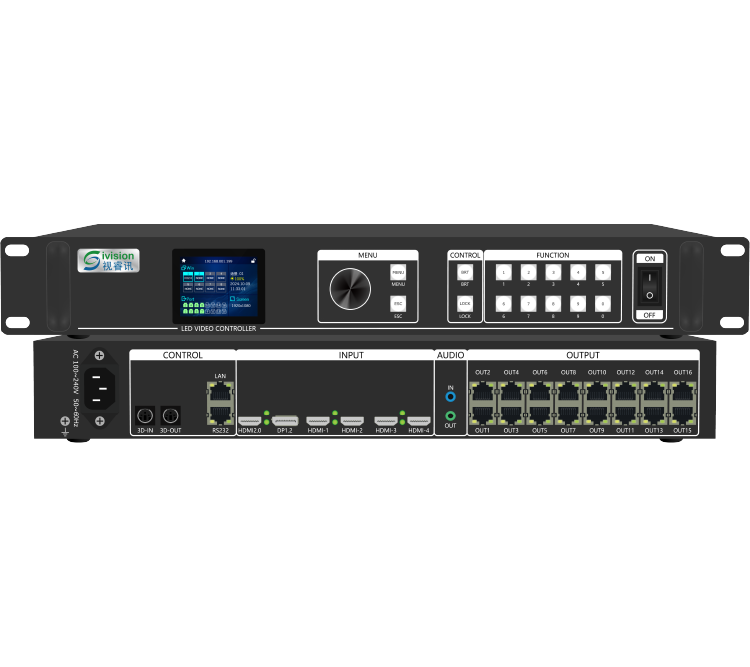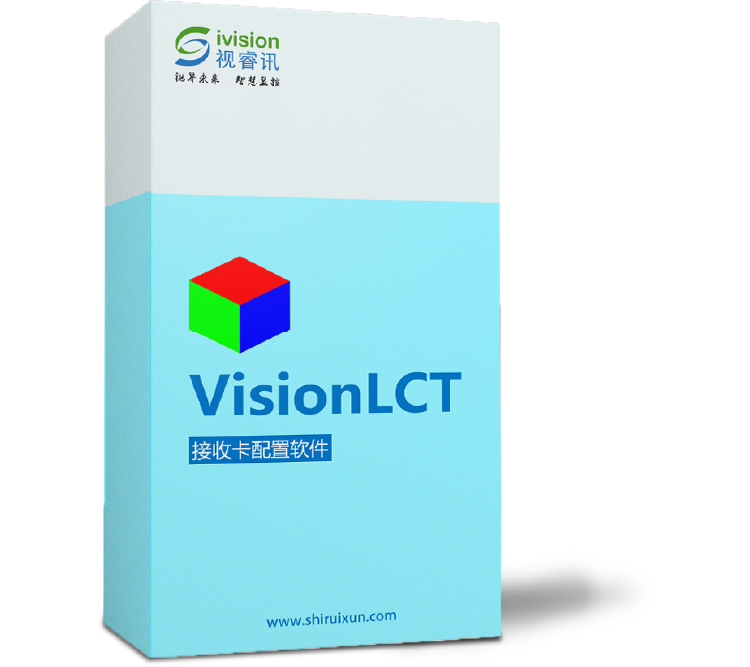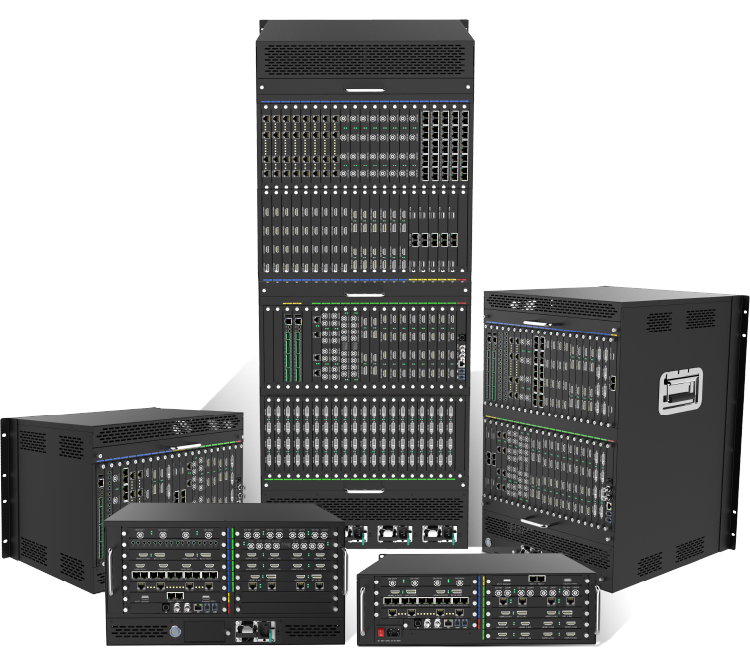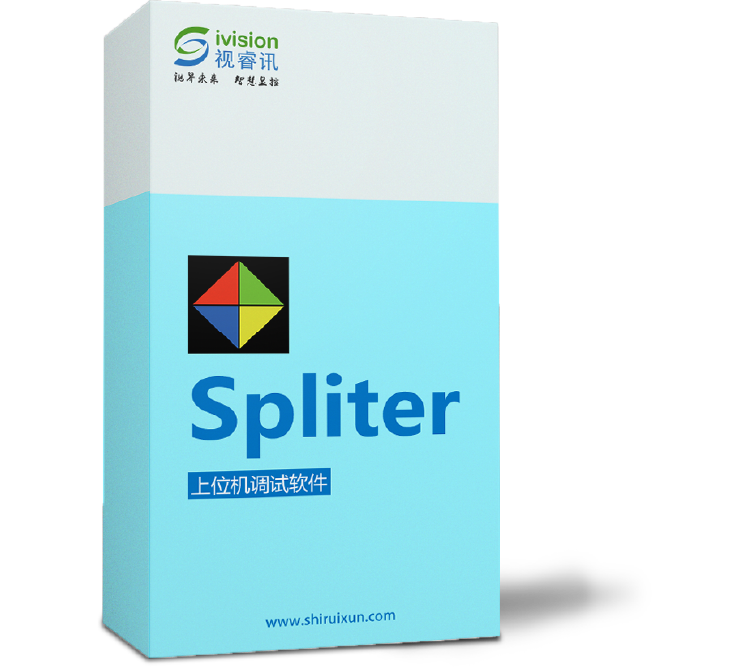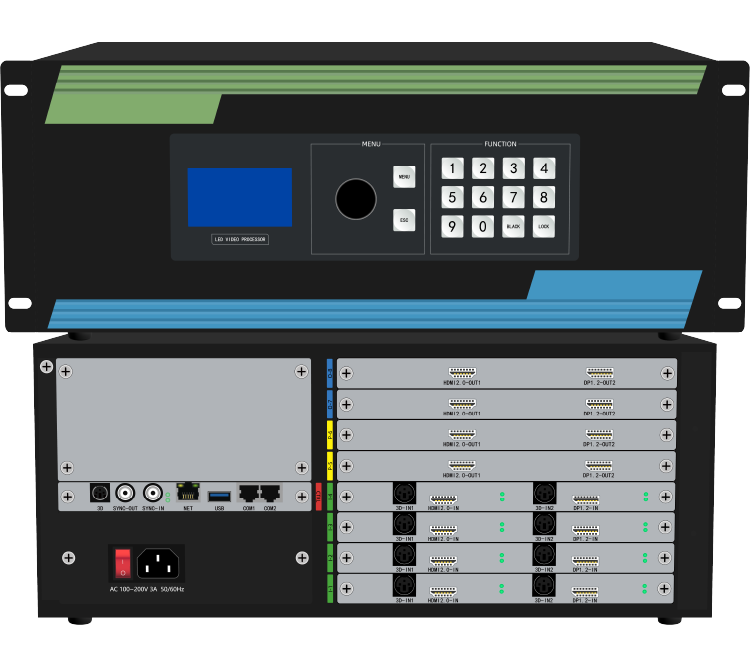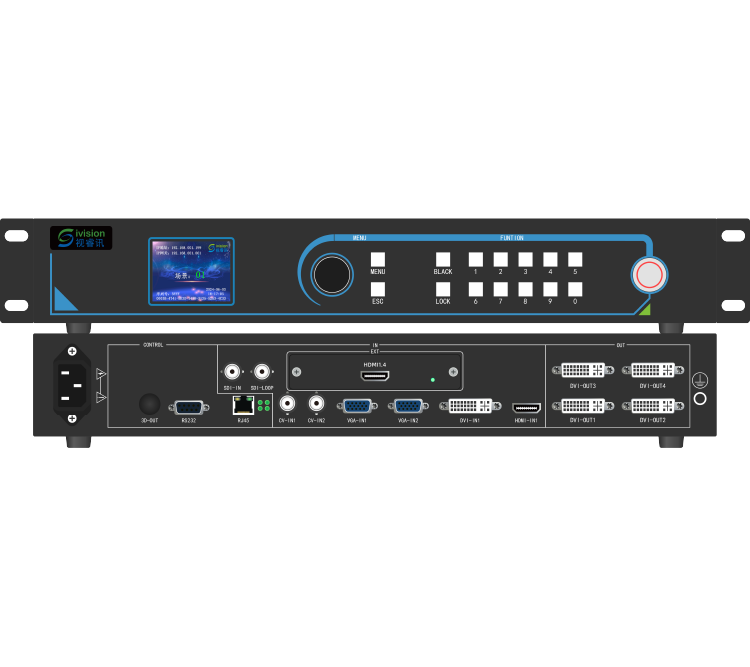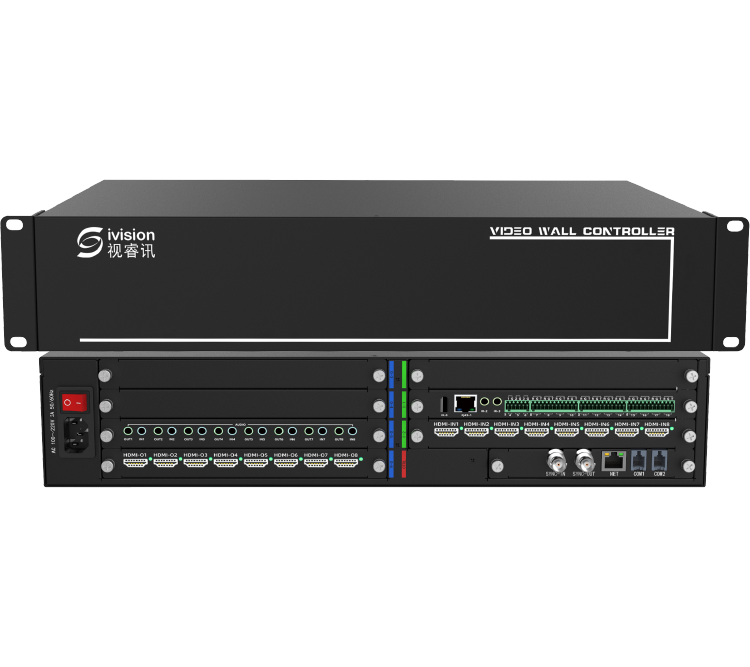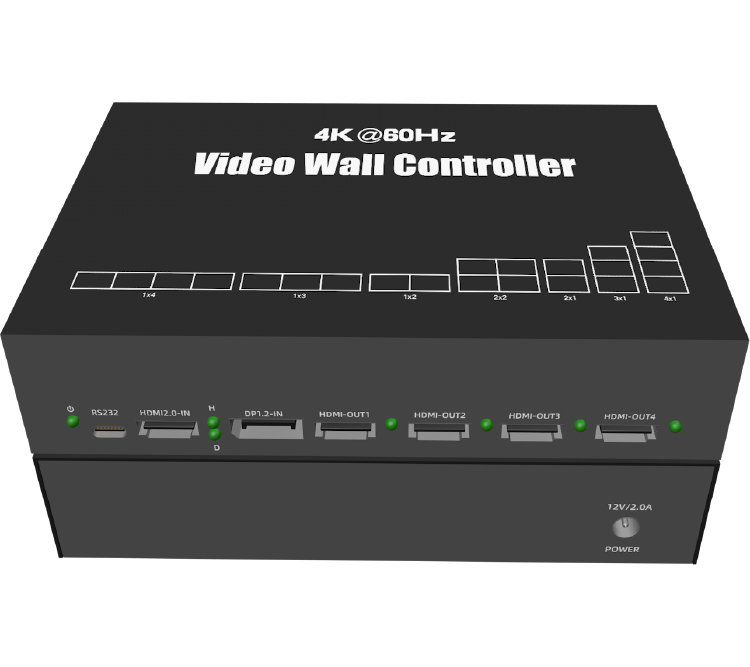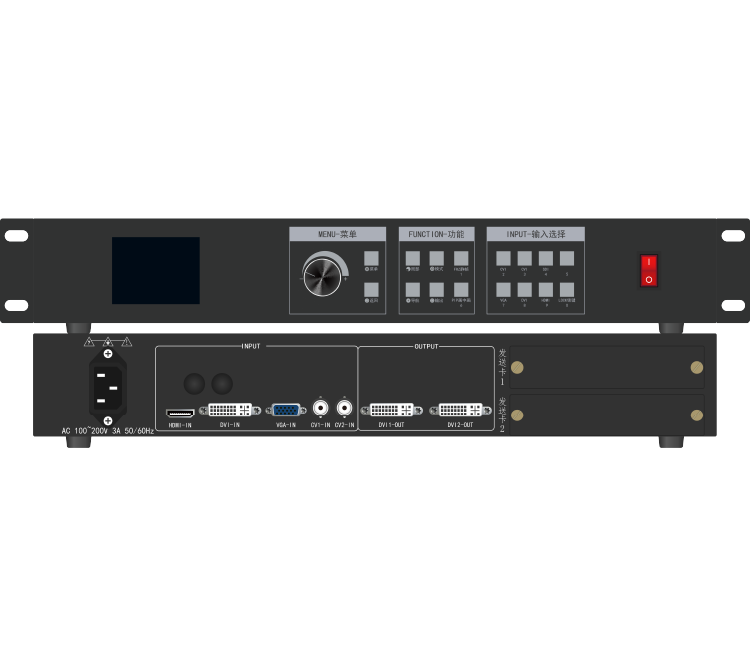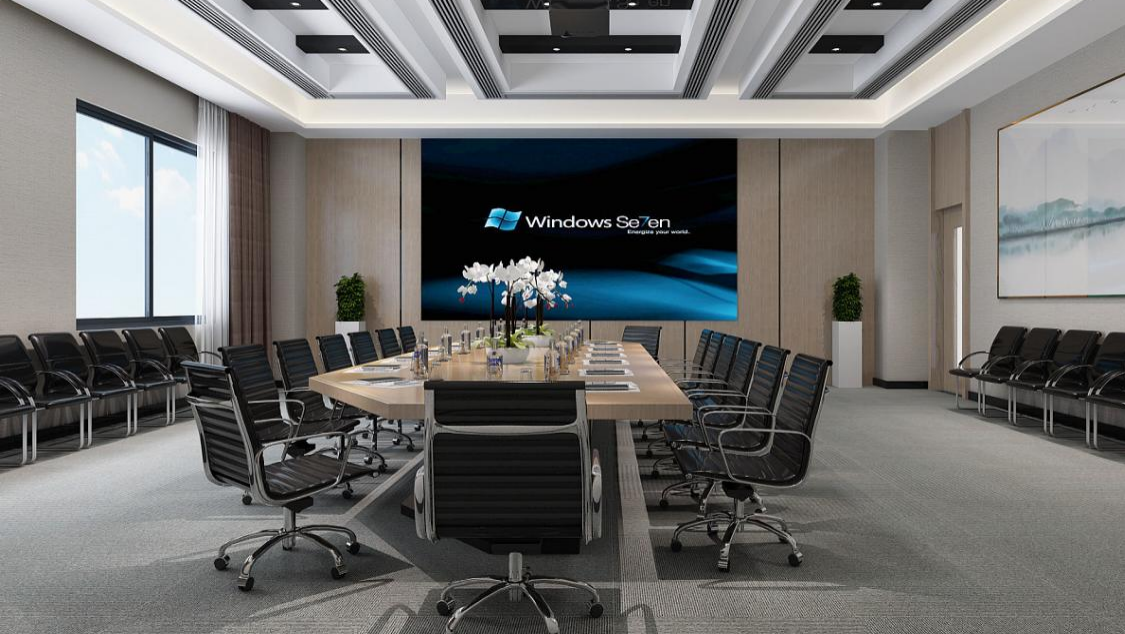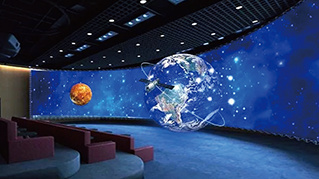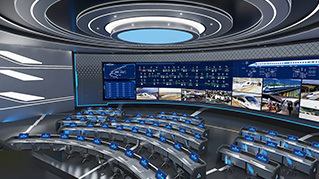LED-3D Display Solution
3D display technology leverages the human eye's visual system by using glasses or other devices to separate the images intended for the left and right eyes, allowing viewers to perceive depth and stereoscopic effects. As a result, various techniques have emerged to achieve 3D visualization. Currently, 3D technologies are primarily categorized into two main types: glasses-based and autostereoscopic (naked-eye) methods. Glasses-based 3D technologies include color-glass, shutter-based, and polarized systems (also known as color separation, time-division, and light-separation methods), while autostereoscopic 3D technologies encompass lens-array approaches, barrier-grid systems, and directional light sources.
Project Background
With the rapid advancement of display technology, audiences are gradually shifting from 2D to more immersive, lifelike 3D visuals. As a result, 3D display technology has increasingly become a market hotspot. Also known as stereoscopic display technology, 3D displays create visual effects that evoke a sense of depth and realism. By leveraging the principle of binocular disparity—presenting slightly different images to each eye—these systems enable the brain to perceive a fully three-dimensional image. This innovative technology allows viewers to feel as though objects are "stepping out" of the screen, delivering an incredibly immersive and engaging viewing experience.
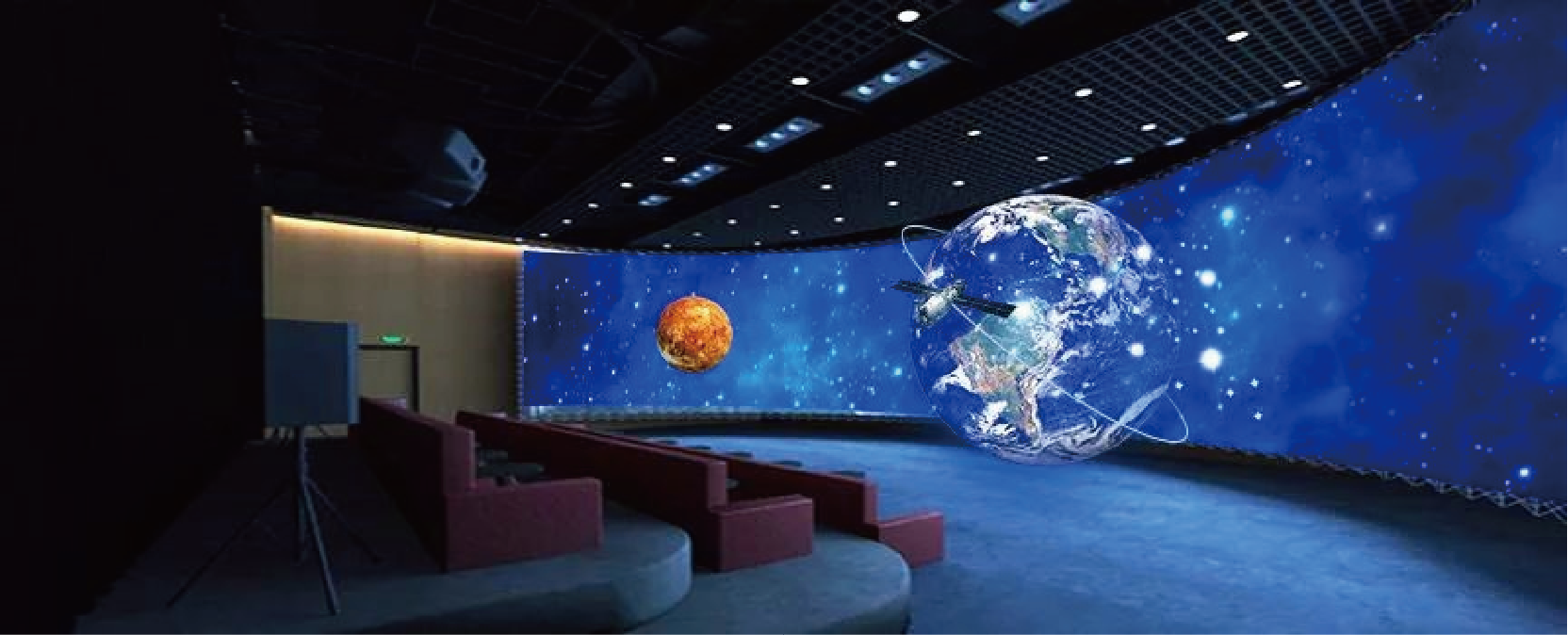
3D display technology leverages the human eye's visual system by using glasses or other devices to separate the images intended for the left and right eyes, allowing viewers to perceive depth and立体感. As a result, various techniques have emerged to achieve 3D visualization. Currently, 3D technologies are primarily categorized into two main types: glasses-based and autostereoscopic (naked-eye) methods. Glasses-based 3D technologies include color-glass, shutter-based, and polarized systems (also known as color separation, time-division, and light-separation methods), while autostereoscopic 3D technologies encompass lens-array approaches, barrier-grid systems, and directional light sources.
These four technologies—active 3D for LED display systems, continuous-frame 3D, polarization-based 3D, and autostereoscopic 3D—each have unique features, allowing you to choose the most suitable 3D display type based on your specific application needs and personal preferences.
Proposal Overview
I. ViewSonic's Active 3D Solution
Active 3D display technology, also known as shutter glasses technology, uses a 3D synchronization signal transmitter and active 3D glasses to create a stereoscopic visual effect. It is currently the mainstream 3D technology widely adopted around the world.
Visionary's active 3D display solution leverages shutter-based 3D technology—perfectly suited for LED displays—and an active imaging mode. The system comprises the BVP8000-3D video processor, EMT100-3D synchronizer, active 3D glasses, and 3D content sources in either active (left-right or top-bottom) formats. Best of all, it delivers stunning 3D visuals without requiring complex peripheral equipment.
Visionary's active 3D display solution delivers high-resolution visuals with lossless native image quality, powered by the industry-standard RF-2.4GHz 3D synchronization technology. This ensures more flexible and efficient connectivity, giving consumers greater freedom and an unparalleled 3D viewing experience.
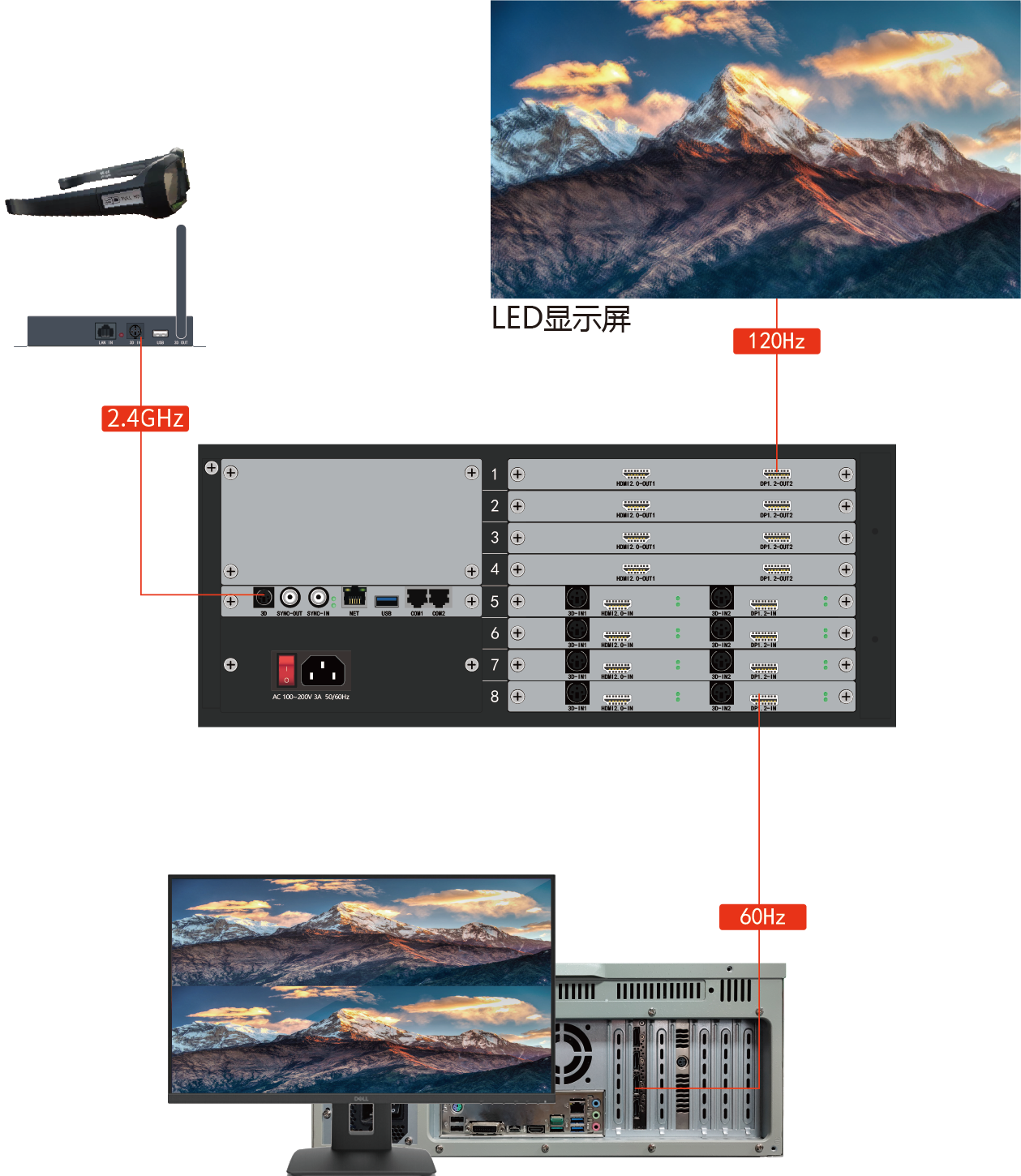
II. Continuous Frame 3D Solution
Frame Sequential 3D is a 3D display technology that creates stereoscopic visual effects by continuously sending frames at a high refresh rate. This technique typically requires the display device to support at least a 120Hz refresh rate. Therefore, to achieve frame-sequential 3D, the 3D blending and stitching processor must be capable of handling input and output signal sources with a minimum of 120Hz high refresh rate processing.
The essence of continuous-frame technology is simply sending images continuously—for example, a 60Hz video would transmit each frame at a rate of 120Hz, with frames displayed alternately to the left and right eyes. As a result, the device doesn’t need to process the signal; it only needs to be capable of receiving and playing back signals at the appropriate frequency to achieve the effect.
However, when the signal frequency received by the 3D glasses doesn't match the frequency emitted by the synchronizer, a "stereo flip" phenomenon occurs. To address this issue of continuous-frame 3D left-and-right eye image flipping, ViewSonic has developed a solution that incorporates an independent data interface at the hardware level, paired with ViewSonic's proprietary left-and-right frame-tracking technology. This ensures seamless synchronization between the 3D fusion and stitching processor, the computer, and even simulation software—effectively resolving the root cause of image flipping.
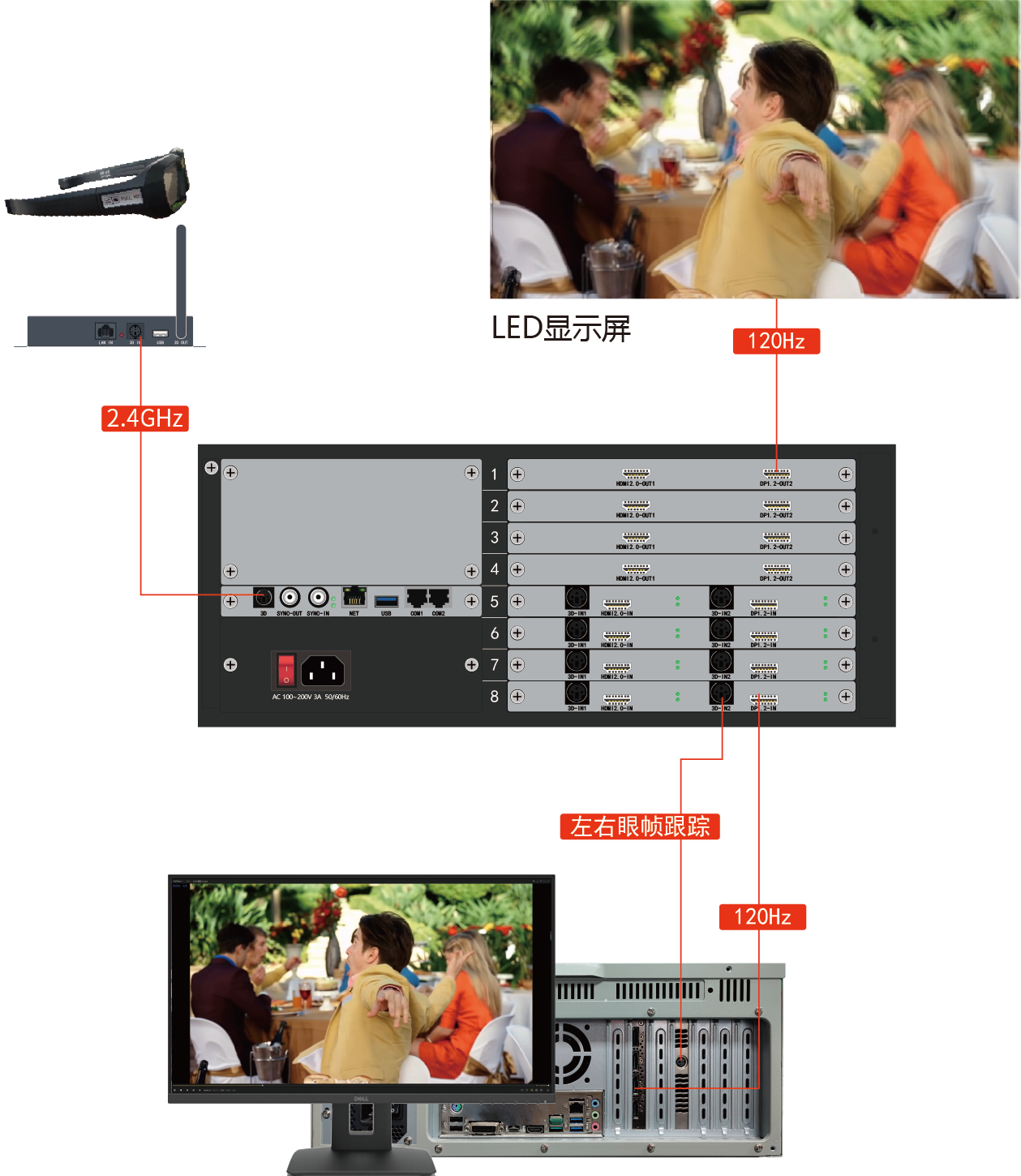
III. Polarized Light 3D Solution
Polarization 3D display technology, also known as Polarization 3D or polarized 3D technology, is a 3D display method that leverages the properties of polarized light to create a stereoscopic visual effect. It works by using special polarizing filters or polarizers on the LED screen to separate the image, ensuring that the left and right eyes perceive slightly different parallax images.
The VisruiX polarized 3D solution is a comprehensive system comprising the BVP8000-3D fusion and edge-blending processor, display devices equipped with polarization films, polarized 3D glasses, and polarized 3D content sources. It supports interlaced, column-based, and checkerboard-style content formats. Notably, the polarized 3D glasses operate independently of the display equipment—no signal synchronization transmitter is required—and they don’t need to be charged. Additionally, there are no limitations on the number of glasses or viewing distance, allowing users to enjoy exceptional 3D visuals without relying on complex ancillary equipment.
The SeeReal Vision polarized 3D solution is also widely used in cinemas, home theaters, educational exhibitions, virtual reality devices, and fields such as optical imaging and depth sensing—thanks to its high compatibility, wide viewing angles, and comfortable eyewear experience.
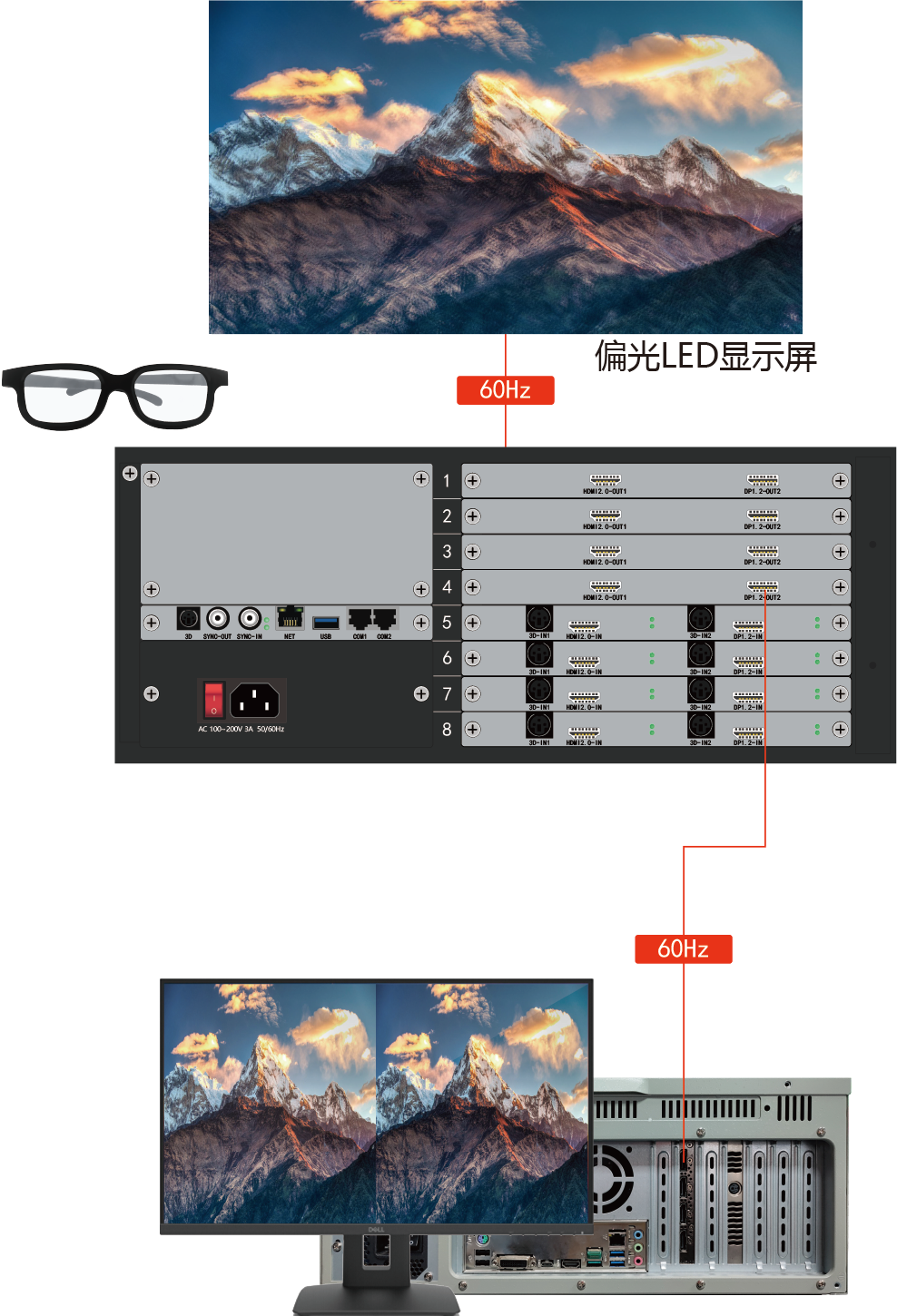
4. Naked-eye 3D Solutions
LED naked-eye 3D spatial visualization technology leverages high-resolution LED screens seamlessly stitched together as its foundation. By applying the principle of "distortion," a 3D fusion and splicing processor reorganizes the video image composition. This seemingly warped projection method ultimately creates a true-to-life, immersive naked-eye 3D visual art experience.
The Visrui 3D naked-eye solution consists of a 3D fusion and splicing processor, an LED display panel, and custom content, allowing viewers to experience immersive 3D visuals without the need for 3D glasses. The 3D fusion and splicing processor supports high-resolution displays, enabling true 8K point-to-point rendering that faithfully reproduces image clarity, grayscale levels, and color accuracy. Paired with customized naked-eye 3D content tailored to the specific parameters of the project’s large screen, this innovative setup delivers an even more lifelike and captivating 3D visual experience.
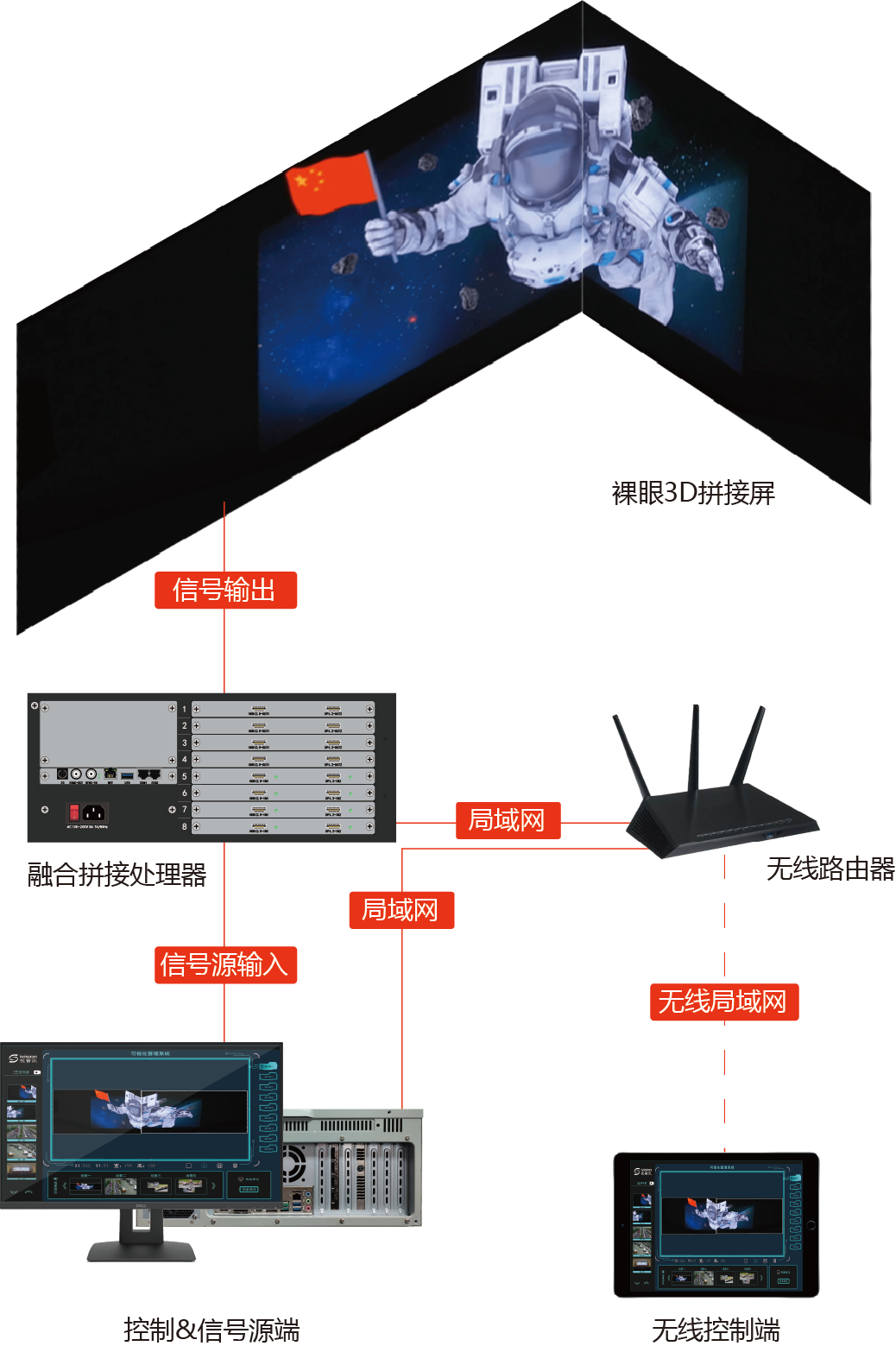
Product Introduction
1. Left-and-right eye frame tracking technology
The principle behind active 3D glasses is that the left and right eyes alternate between being open and closed. When the left eye is open, the right eye is simultaneously shut—this synchronization with the projected image is crucial. If the projected image is intended for the right eye, but the 3D glasses happen to have the left eye open while the right eye remains closed, the viewer will perceive the image as "stereoscopically inverted."
Vizion's unique left-and-right frame-tracking feature resolves the issue of unclear left and right frames in frame-sequential formats, ensuring that no left-right eye reversal occurs during playback in such formats.
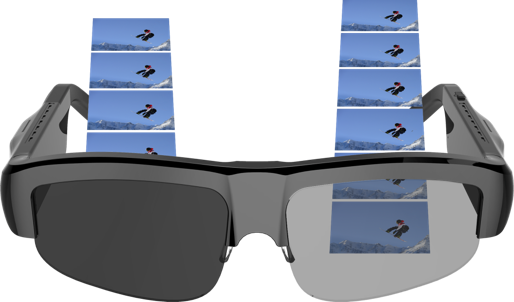
2.16K and above point-to-point display
A single 3D fusion and stitching processor features multi-channel 4K-3D input fusion technology, capable of combining multiple 4K-3D resolution input signals. Leveraging advanced algorithms and powerful processing capabilities, it delivers output resolutions as high as 8K-3D, 16K-3D, or even higher.

3. 3D-120Hz high refresh rate
3D-120Hz technology is a 3D display technique that leverages a high refresh rate to create stereoscopic visual effects. In 3D displays, the images seen by the left and right eyes are rapidly alternated in quick succession, so it’s crucial that each eye receives frames at a rate exceeding 60Hz. This ensures smooth visuals without ghosting or trailing artifacts.
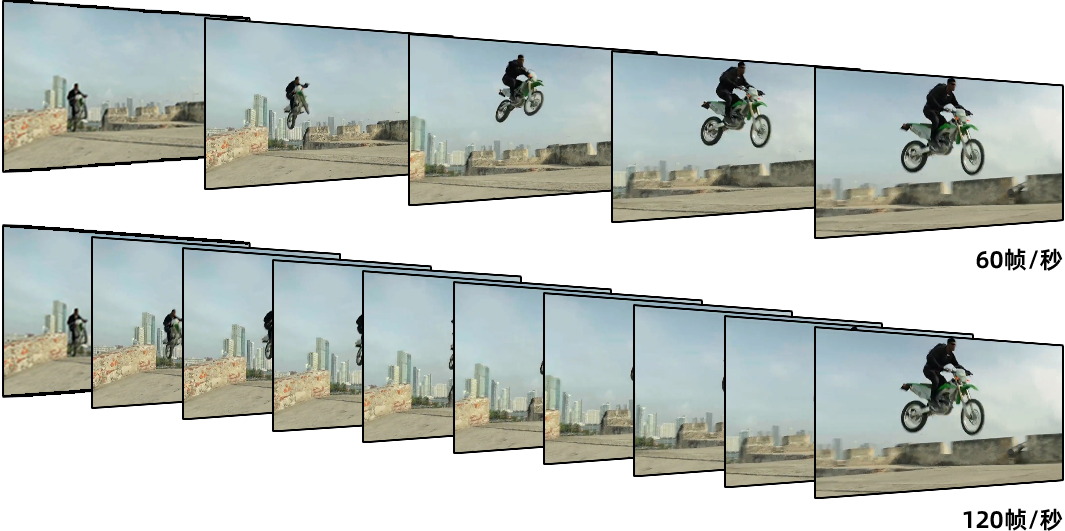
4.2D/3D simultaneous display
VisionX's unique image-processing algorithm offers exceptional flexibility and versatility. Users can choose to display either 2D or 3D images, or even view both formats side by side on the same screen. Additionally, 2D and 3D images can be displayed in any number of resizable windows simultaneously.
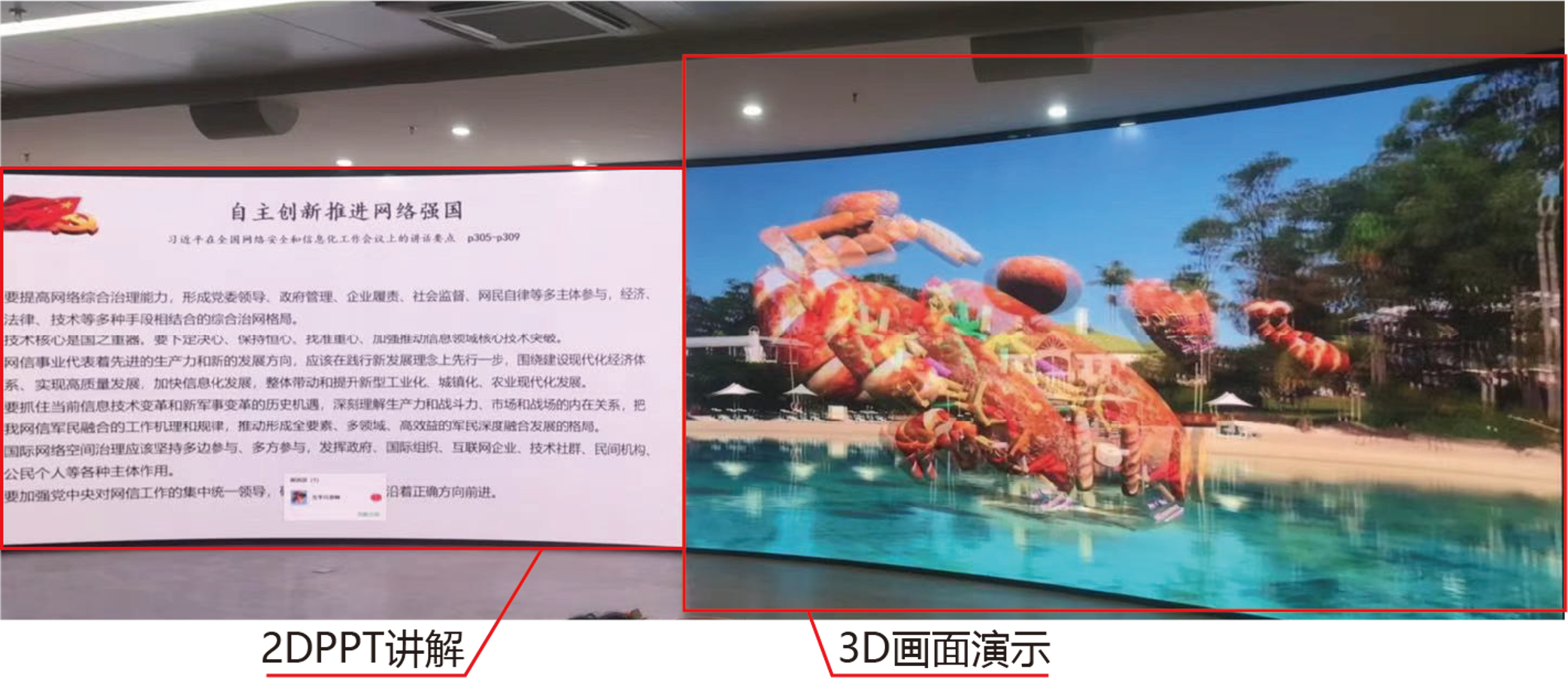
5. Combines four 3D modes into one
The Visrui 3D image processor integrates several of today's leading 3D technologies into a single unit, enabling seamless switching among four distinct modes: active stereo, polarized light, frame-sequential, and standard 2D. This flexibility makes it perfectly suited to meet the diverse requirements of various 3D display applications.
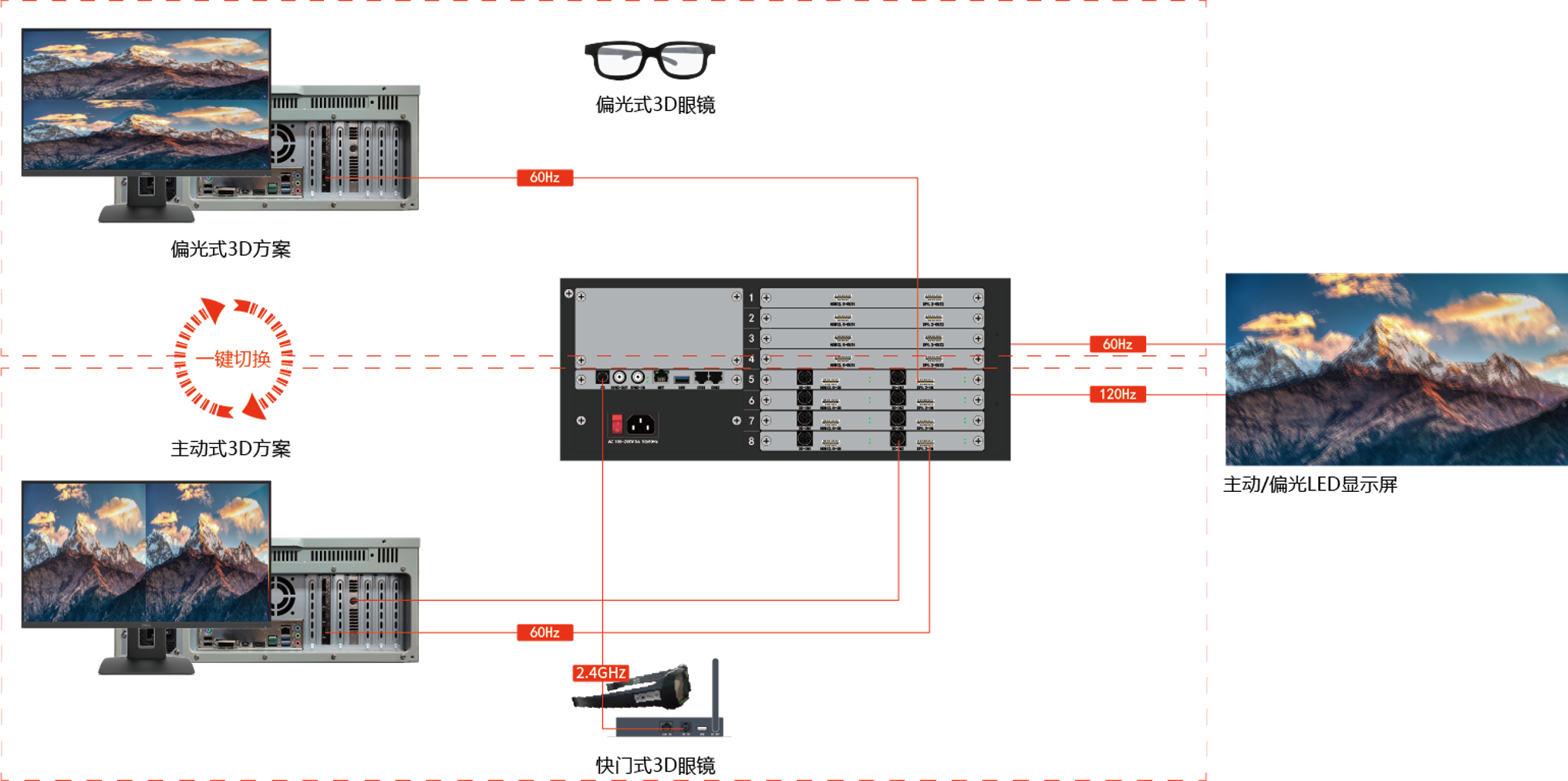
6. 3D Dual-Channel Imaging
The Visrui 3D Fusion and Splicing Processor displays left- and right-eye dual-channel signals frame-by-frame in the same image, seamlessly blending them in real time to produce a 3D output, enabling synchronized playback of 3D content sources. The dual-channel left- and right-eye signals can be supplied by a stereo camera or specialized simulation software.

7. Multiple Control Methods

In today’s digital and information-driven era, people are increasingly demanding higher-quality visual experiences—yet traditional 2D displays can no longer keep up with these evolving, diverse needs. LED displays, now capable of delivering true 3D visuals, have emerged as a shining star in the realm of modern display technology. With their unparalleled immersive viewing experience and vast potential for real-world applications, they’re rapidly becoming a powerful force shaping the future of display innovation.
In the future, as technology continues to innovate and the market keeps expanding, Viewray will also bring more surprises and possibilities.

